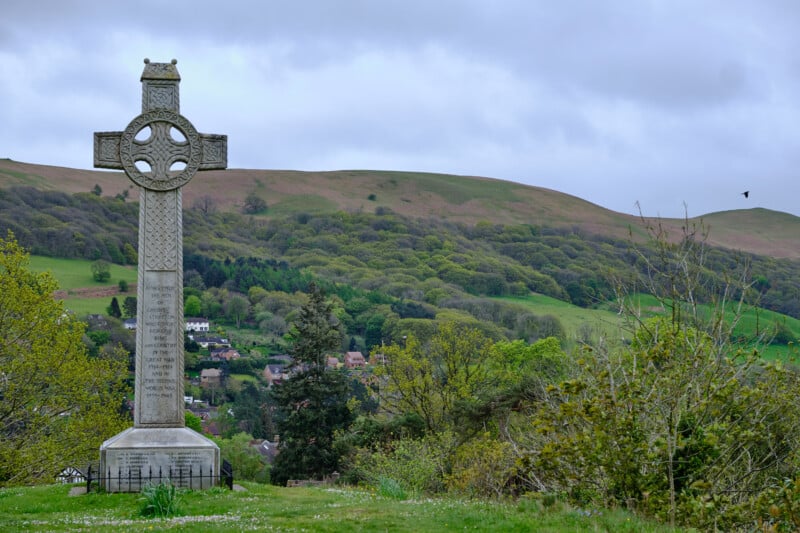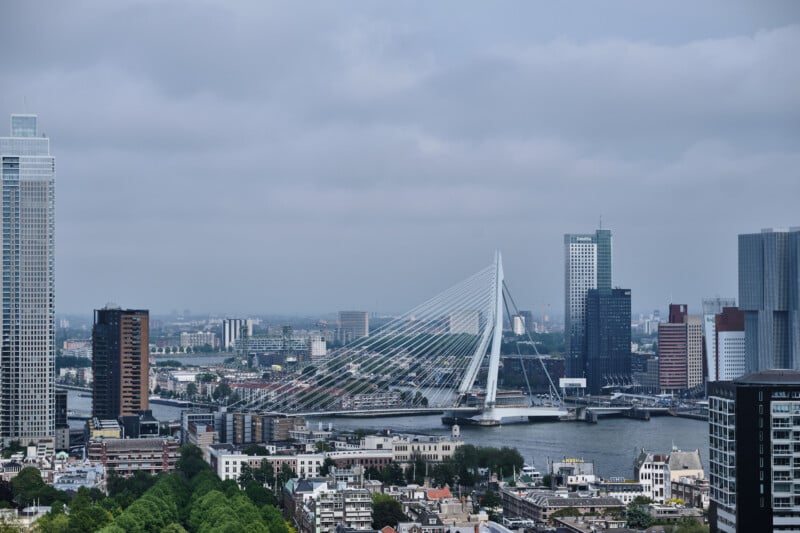Viltrox AF 56mm f/1.7 XF Review: Fantastic Images at a Budget Price

Viltrox has been busying itself with full-frame Z-mount releases over the last year, building upon the core of its business which has been centered around APS-C. In fact, the last Fuji X-mount release was the “Pro” monikered 27mm f/1.2 that I reviewed in August 2023. The new 56mm f/1.7 sits at the opposite end of the spectrum, retailing at an extremely modest $139. It may be budget in price, but its performance is far from it.
Understanding a manufacturer’s lens roadmap can help us to understand the direction of travel and future prospects. From that perspective, Viltrox’s weaving path has been “interesting” to say the least. Like most Chinese manufacturers, its lenses are budget-priced relative to the competition however there has been a push over the last decade towards the quality and premium ends of the spectrum, eschewing the stereotypes of some of the nasty third-party lenses that appeared in the 1980s and 1990s.
It’s therefore surprising to see the latest APS-C release from Viltrox to be “budget” in relation to its own lineup. The 56mm f/1.7 sits alongside the premium feeling 56mm f/1.4 ($299), so I was intrigued to see how they differed in specification and who they are targeted at.
Photography has increasingly become a niche and costly pastime in an era of smartphones, so who is going to buy a $139 lens? That’s a question I will return to at the end, however, it’s worth reiterating at this point that Viltrox is one of the leading Chinese lens manufacturers that have sprung up over the last 10 years, managing to stand out from an increasingly bland crowd. It started with simple lens formulations using manual focus but has rapidly — and under license — moved into autofocus options.

Lens Specification
The base specification is a 56mm focal length (28-degree field-of-view or FoV) giving a focal length equivalent of 85mm. This is my preferred focal length for portraits but is also a tighter FoV for landscape and urban shooting, allowing me to pair it with the Fuji 27mm f/2.8 pancake (40mm equivalent) to give a travel-friendly two-lens setup. The nine-bladed aperture ranges from f/1.7 to f/16 with a minimum focus distance of 0.55 meters with 11 elements in nine groups. Weighing just 171 grams and a svelte 65 by 55mm in size, this is a small and light lens. As you can see from the image above, there are three high-refractive lenses and four ED low-dispersion lenses, meaning that this is not a simple lens formulation. It has a standard 52mm filter size and a small petal hood that reverses for storage on the lens barrel, supplied with a soft pouch for storage.
Crucially then, how does this compare to the 56mm f/1.4 specification? That has a minimum focus distance of 0.6 meters, 10 elements in nine groups construction, a nine-bladed aperture, weighs 290 grams, and measures 65 by 72mm. On face value, that might not seem wholly different but when you compare them side-by-side it’s clear that the new baby brother really is significantly smaller.
And that weight makes a huge difference to handling — this lens is much lighter. For my testing, I paired the 56m f/1.7 with a Fujifilm X-E3 which is about as small as they come in the Fujifilm range. On a small camera such as this, the 56mm f/1.7 makes for a true travel companion. The images below show the f/1.7 in detail, as well as alongside the f/1.4. This obviously isn’t a review of the f/1.4 lens, however for completeness I’ve included both lenses wide open, with the backdrop about five meters away. The f/1.4 (bottom) has noticeably more bokeh; only you will know if that is important to you.



Build Quality and Design
The design utilizes an all-plastic outer casing with metal only for the mounting plate of the lens (which incorporates a USB-C port for firmware updates). It is entirely self-contained, operating with internal focusing (IF) that uses a stepping motor (STM) for focusing. The latter is a tried and tested technology, with relatively rapid and quiet focusing. The case has a ribbed focus ring that is a touch heavier and rougher than the f/1.4; the latter is perfectly weighted and smooth, whereas the f/1.7 feels just a little rough but by no means unacceptable. This highlights that there is no aperture ring — the lens is fly-by-wire and the aperture is set from the camera, unlike the f/1.4 lens.

The narrower aperture, simpler build design, and use of plastic have allowed Viltrox to make the lens significantly smaller and lighter than the f/1.4 lens option, but this has an aperture performance penalty (see the examples above). The plastic casing is also less “premium” although whether it is less durable will require long-term testing. The hood is quite short (and would be better with slightly more resistance) which is less to my liking and probably about half the height of the f/1.4 hood which is about optimum. This means it’s less effective at blocking stray light entering the lens, particularly when shooting toward the sun. However, the reason is clear: this is as long as the hood can be when reversed on the shorter barrel and still allow manual focusing. I would have preferred the longer hood and it’s doubly irritating because the fixing lugs are different between the two lenses so you can’t swap them. The petal shape is also interesting because it’s not really needed given that the hood is too short anyway, you want it to be as long as possible all around.

Image Quality and Performance
This review isn’t a lab test, but rather an extended period of real-world assessment. I had a couple of low-key assignments to shoot and a few personal trips where I used it. For traveling I paired the 56mm with a Fujifilm 27mm and exclusively used these two lenses. I shot with a Fujifilm X-E3 principally used with spot auto-focus that is set using the joystick, varying between continuous and single auto-focus modes. The camera was in aperture priority mode, using auto-ISO set with a minimum shutter speed of 1/100 second and a maximum ISO of 3200.

Focus speed is a combination of the performance of the lens and camera and the stepping motor delivered snappy focus where there was plenty of contrast in the scene to lock on to. It felt ever so slightly slower than the f/1.4 but this may have been more psychological. In short, it doesn’t lag in any discernible way. In the more challenging environment of an indoor event, the lack of light makes focusing more difficult and the narrow aperture ends up pushing the ISO higher. Yes, this didn’t perform as well as the f/1.4 lens, but any camera would struggle in such an environment. A full-frame sensor would be preferable but you have to offset this again (generally) by having a larger camera.

Viltrox’s published MTF chart shows very good sharpness (y-axis) at f/8 (blue lines) from the center to the corner (x-axis). Wide open sharpness remains excellent, only becoming noticeably softer at the higher spatial frequencies (thin black lines). I really wasn’t expecting such an excellent claimed performance from a budget lens, but the optical formula remains competitive and the 56mm sits in the sweet spot for achieving this economically.

During testing, I also shot directly into the sun at a range of angles up to 90 degrees. Flaring was very well controlled, with no real veiling (loss of contrast) and very limited ghosting. There appears to be very limited chromatic aberration or distortion, with some vignetting wide open. This is perhaps to be expected, both because the optical formula is simple for a lens like this and because there will be in-lens corrections applied in creating the RAW file. That said, I was particularly pleased with the performance shooting into the sun and felt no real constraints from the lens. Stopped down there are mild sun stars produced when shooting at a light source, but they are not nicely defined.
For a portrait lens, bokeh will be all important and this lens shines. Yes, it’s not as blurry as the f/1.4 but it is smooth and well controlled. Increasing the separation between subject and background (and utilizing the minimum focus distance) allows excellent control.




The Best Budget Lens?
My expectations for this lens were set by the low asking price of $139. Yet I’ve come away from this extended period of testing completely blown away by what it can achieve. In terms of focus speed and sharpness, this is about as good as I could expect for any lens I use for urban, street, and landscape photography.
Yes, the f/1.7 drops the low-light performance and bokeh, but what you get back is a super small and ultra-light piece of glass that not only slips into your camera bag, it slips into your pocket. Not only did I come away thinking the images I’d captured were largely comparable to anything else I would shoot with, but it has now become my preferred “go-to” lens if I need to grab a small camera to throw in a bag. I will take this in preference to the f/1.4 just because it is so much more portable and marries up nicely to the Fujifilm X-E3.
The question remains: who is this lens targeted at? My initial thought was that this was intended for those making the jump from a smartphone to a first mirrorless camera. It would certainly cater to this segment, particularly as there are X and Z mount variants. However, maybe Viltrox has the more vaulted aim of making the best glass in the most affordable format and, on this front, it has well and truly succeeded.








Are There Alternatives?
This is a popular focal length for APS-C cameras with a number of alternatives. The TTArtisan AF 56mm f/1.8 is perhaps the closest rival with similar pricing, although it is longer and heavier. This is closely followed by Viltrox’s own AF 56mm f/1.4 which obviously has a faster aperture but is also physically longer and heavier. Moving to the tier above are the Sigma 56mm f/1.4 DC DN Contemporary and Fujifilm XF 56mm f/1.2 R WR, both of which are excellent lenses with prices that reflect that.
Should You Buy It?
Yes. This is not a studio lens and not intended to compete with top-tier competition but what it offers is performance that far exceeds its appearance and low price. If you are on a budget, then it ticks all the boxes while as a travel lens, it is the perfect companion. Viltrox has managed to break expectations and genuinely set a new bar for performance at this price.



